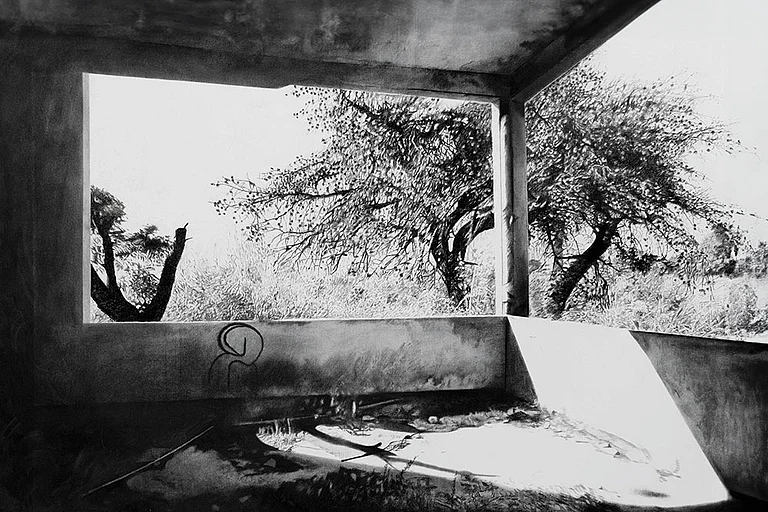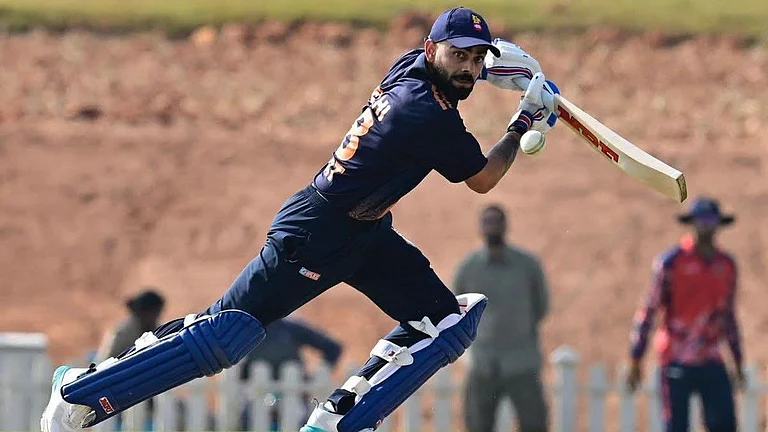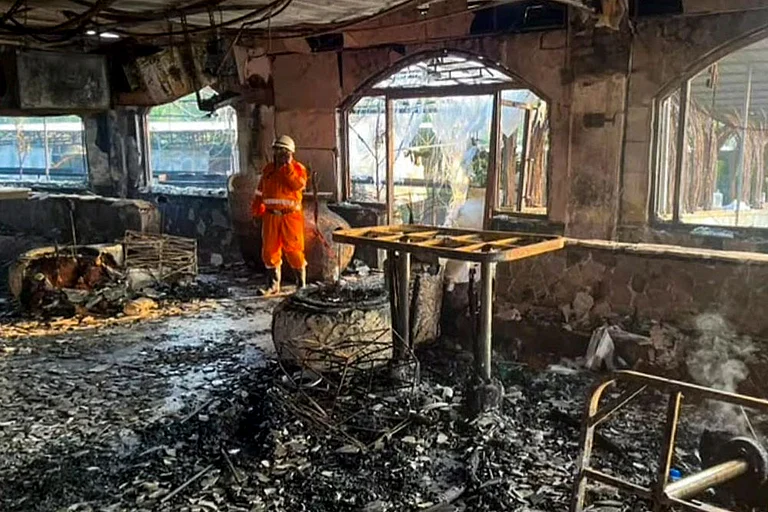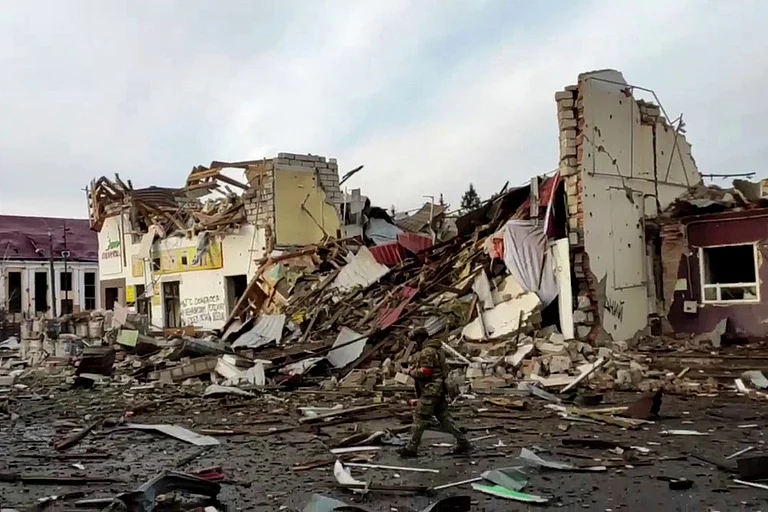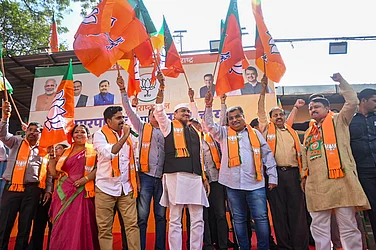The Battle of Pollilur, 1780, is a great favourite of history buffs and technologists alike. The clash, near Kancheepuram, ended with the surrender of British troops to the Mysore army of Hyder Ali and his son Tipu Sultan, a celebrated victory at the centre of which is a mystery that lasts to this day—the Mysore rocket. That Hyder and Tipu flustered the East India Company’s soldiers with their fireworks is a well-known tale from history. There are accounts of some of these skirmishes by later writers. We also know that, when Tipu fell in 1799, the British took away some of the rockets, and it is from those that William Congreve is said to have later developed his eponymously-named missile.
But that’s about all. So, when last month, Karnataka’s archaeology department dug up about a thousand Mysore rockets from an arecanut farm in Nagara, a small town close to the steep ridges of the Western Ghats in Shimoga district, it was nothing short of sensational for many. The find is believed to hold out the promise of answers to a range of nagging questions about a piece of technology that appeared suddenly like a bright flame in an era of turmoil and then, equally swiftly, disappeared from the region that developed it.
“One thing is to find out exactly what the secrets were,” says aerospace scientist Prof Roddam Narasimha, whose 1985 lecture, ‘Rockets in Mysore and Britain, 1750-1850’, was perhaps the first detailed look by a contemporary Indian technologist into that chapter. “The other question is historical—how was it that, of all places, it was in South India where the most powerful rockets in the world were at that time?” Of course, the Chinese too had been using some sort of rockets in battle and the Europeans, too, were experimenting with them—in Germany they used “wood, covered with sail-cloth soaked in hot glue”, goes one account. But nobody had used metal cylinders to such effect before, and there is no record of anything similar in India before Hyder Ali’s rocket corps. The British troops, at least, were shell-shocked because they had never encountered them in battle before.

A Mysore rocket at Bangalore’s government museum
Tipu, historians say, raised a larger corps of soldiers—at least 5,000 men—than his father to launch the rockets. But in the two centuries since the Siege of Seringapatam in which Tipu was killed, the only available specimens of the Mysore rockets were three pieces at the government museum in Bangalore, which aren’t on permanent display, and are hence not very widely known, besides a couple at the Royal Artillery Museum in Woolwich. Experts say one of the three in the Bangalore museum is probably the only example of a complete rocket that exists today—an iron cylinder strapped to a bamboo pole using hide.
The 1,000-odd specimens discovered in Nagara are iron cylinders 20-30 cm in length and 3.5-5 cm in width. How they were found is actually quite a long story. It goes back to 2002 when a farmer was digging an old, disused well on his land, trying to find water. In the dirt he dug out, he found around 160 rocket casings. Of course, they weren’t identified as such immediately. That happened in 2007, when H.M. Siddhanagoudar, who was with the archaeology department, studied the pieces and put out a short paper. It is only recently, however, that interest has really picked up.
R. Shejeshwara, assistant director at the government museum in Shimoga, says a team went back to the farm on July 25 and scrutinised the area for three days before they unearthed the cache. After cleaning the rockets, the department plans to display them.
Nagara, or Bidanur, as the town was then called, was the capital of the Keladi Nayakas before Hyder Ali conquered it in 1762. “It’s fascinating because these rockets were in the 1780s what a Tesla electric car is today,” says Nidhin Olikara, a Shimoga-based history buff who has been following the story for a few years and writes a blog, ‘The Seringapatam Times’. “The first time we hear of Hyder’s rockets is in 1754, when they were used during a skirmish with the Marathas near Bangalore in today’s Doddaballapura. Suddenly, after Tipu goes, the rockets go away.”
Narasimha points out that many scientists are eager to get their hands on the rockets to conduct tests. One is Prof H.S. Mukunda, an expert on combustion and rocket propulsion at the Indian Institute of Science (IISc) who tried to rebuild the Mysore rockets nearly 25 years ago. The actual process of manufacture can be inferred with reasonable accuracy, but there’s a lot unanswered. For instance, how did the Mysore rocketeers make their gunpowder? “It’s one thing to do some apothecary, and quite another to produce a product that may have variability, but ßalso some minimum performance quality. That means somebody must have been seriously thinking of many of these issues and we don’t know who that person is,” Mukunda tells Outlook. “And how did they arrive at that? Where did they get the materials from?” The technological questions abound.
From his studies of the 2002 Nagara rockets, Mukunda is convinced that the Mysoreans ground their gunpowder material to a very fine state. “How did they mix and how did they load it without causing accidents? I don’t think anybody has even asked these questions, forget about answering them,” says Mukunda.
Clearly, there’s been a lot of interest over the years, with people from varied backgrounds approaching the era from different perspectives. “It calls for a multi-disciplinary approach,” says Prof M.B. Rajani, a researcher at Bangalore’s National Institute for Advanced Studies, who has been studying Srirangapatna’s cultural history using geo-spatial analysis of crop marks. “There’s a whole lot of direct and indirect potential in knowing history of Indian science,” she reckons.
Similarly struck by the Mysore rockets are theatre folk Ram Kamatham and Mallika Prasad, who, for a while now, have been working on a play on the topic, trying to flesh out more about the lives of artisans or craftsmen of the time. “It’s important to try and push even this story of a thousand rockets towards other players and other people in the field, who might have been part and parcel of this whole innovation,” Ram says. “Our objective was to write a play on what struck us as an interesting instance of technology going in the reverse direction...technology prevalent in India being adopted by the British.” The intrigue of the Mysore rocket, it appears, lives on.
By Ajay Sukumaran in Bangalore







